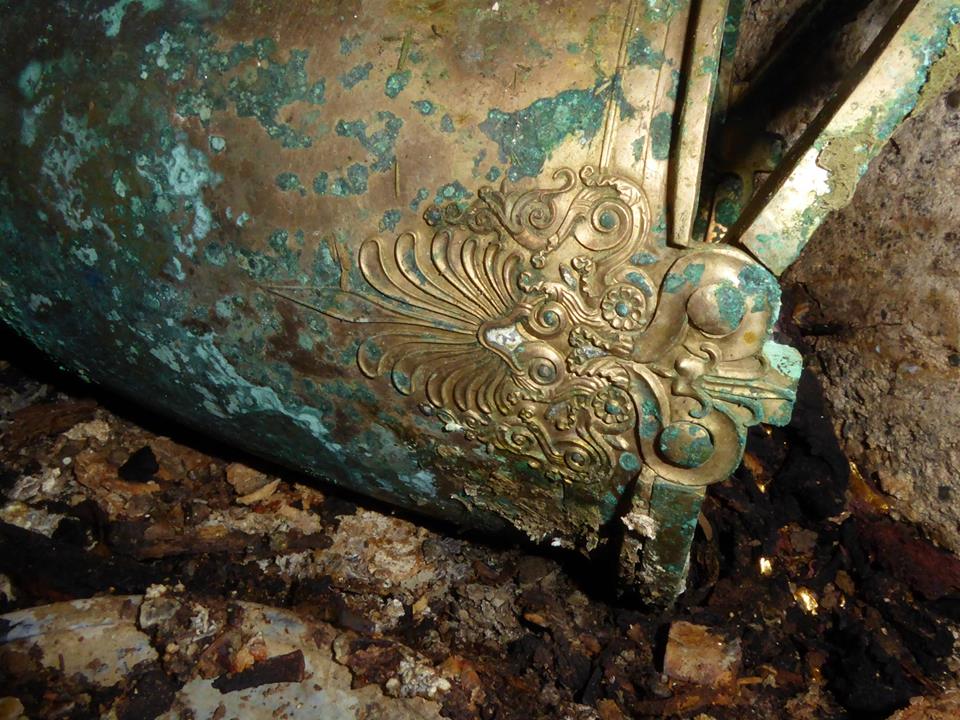 A skeleton has been discovered in the mysterious, richly-decorated tomb from the time of Alexander the Great, Greece culture ministry says.
A skeleton has been discovered in the mysterious, richly-decorated tomb from the time of Alexander the Great, Greece culture ministry says.
The site is believed to be the largest ancient tomb to have been discovered in Greece, and has spurred speculation as to whether the ancient conqueror or a member of his family was buried there.
Officials said the remains were clearly those of “a prominent person”, with speculation rife it could be that of Roxana, Alexander's Persian wife, his mother Olympias or one of his generals.
The dead body had been placed in a wooden coffin, which disintegrated over time. The skeletal remains were found both inside and outside the grave buried underground in the innermost chamber at the site.
The skeleton will now “be studied by researchers”, the ministry said in a statement.
“It is probably the monument of a dead person who became a hero, meaning a mortal who was worshipped by society at that time,” the statement said.
“The deceased was a prominent person, since only this could explain the construction of this unique burial complex.”
Katerina Peristeri, the archaeologist in charge of the dig near Amphipolis in northern Greece, is due to reveal the first of her highly anticipated findings on November 29.
The discovery came as archaeologists confirmed another tomb, close to where the treasure-filled burial chamber of Alexander's father Philip II of Macedon was unearthed in 1977, had also survived the centuries intact.
Angelique Kottaridis, who is in charge of the dig at Vergina, 180 kilometres to the west of Amphipolis, said it also dated from Alexander's lifetime, after breaking the news on her Facebook page Tuesday.
Excavations at the site in north-eastern Greece near the city of Thessaloniki began in 2012. They captured global attention in August when archaeologists announced the discovery of vast tomb guarded by two sphinxes and circled by a 497-metre marble wall.
The near-intact sculptures and staggering mosaics found at Amphipolis have been a cheering reminder of past glories for a country mired in economic woes.
The beauty of a sphinx and intricate mosaics of a man driving a chariot and the abduction of Persephone by Pluto have also fuelled theories the tomb was for a very high-status individual.
Whoever the massive fourth-century BC tomb holds, experts said it was highly unlikely to be Alexander himself, who conquered the Persian empire and much of the known world before his death at the age of 32.
After his mysterious end in Babylon he is said to have been buried in Alexandria in Egypt, the city he founded, although no grave has ever been found.
Reuters/AFP







 VERGINA, Greece—according to
VERGINA, Greece—according to 




 AMPHIPOLIS, GREECE—Greece's Culture Ministry has announced the discovery of skeletal remains in the elaborate late fourth-century B.C. tomb at Amphipolis. "The tomb in all probability belongs to a male and a general,"chief archaeologist Katerina Peristeri told
AMPHIPOLIS, GREECE—Greece's Culture Ministry has announced the discovery of skeletal remains in the elaborate late fourth-century B.C. tomb at Amphipolis. "The tomb in all probability belongs to a male and a general,"chief archaeologist Katerina Peristeri told 






